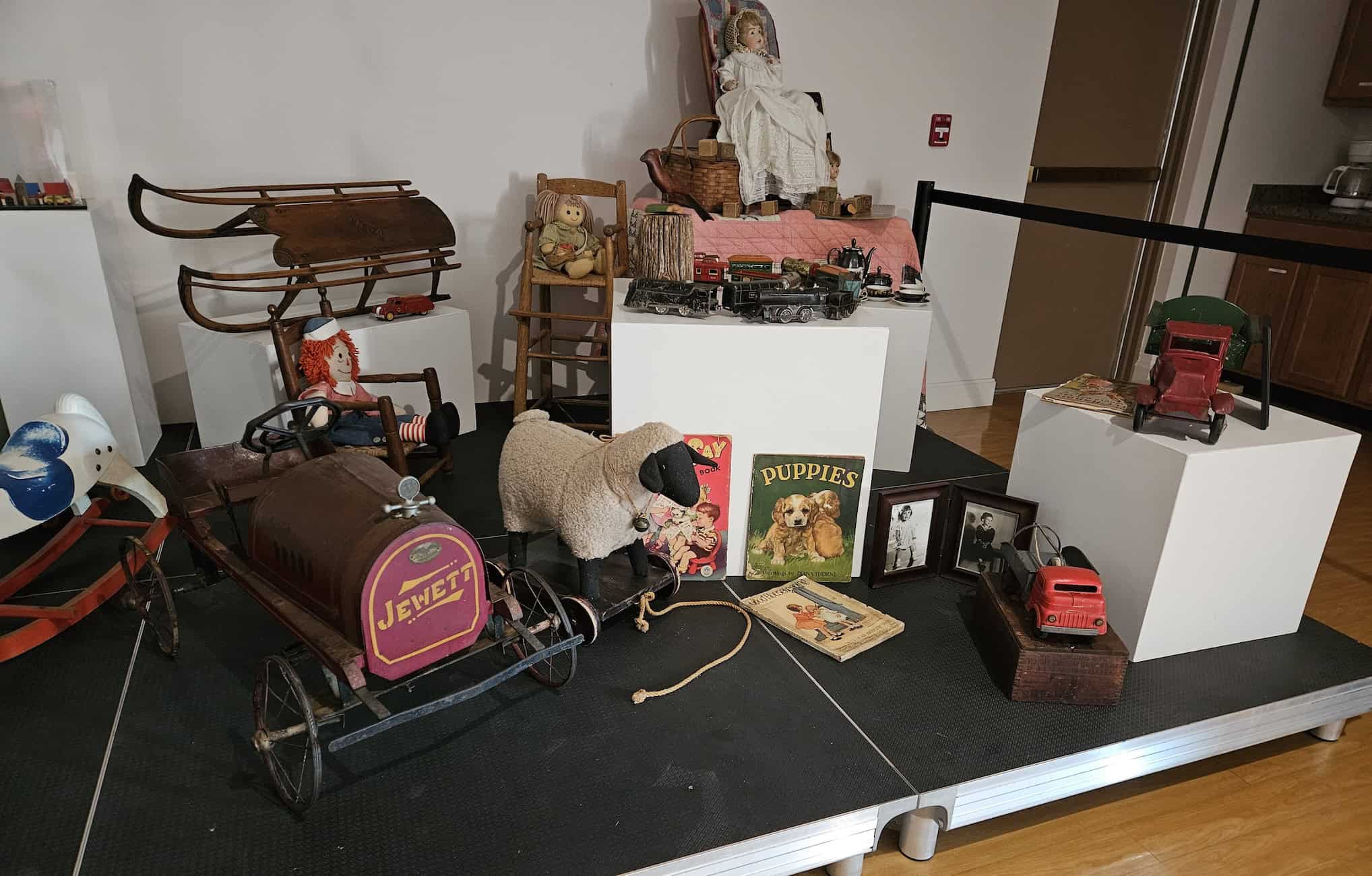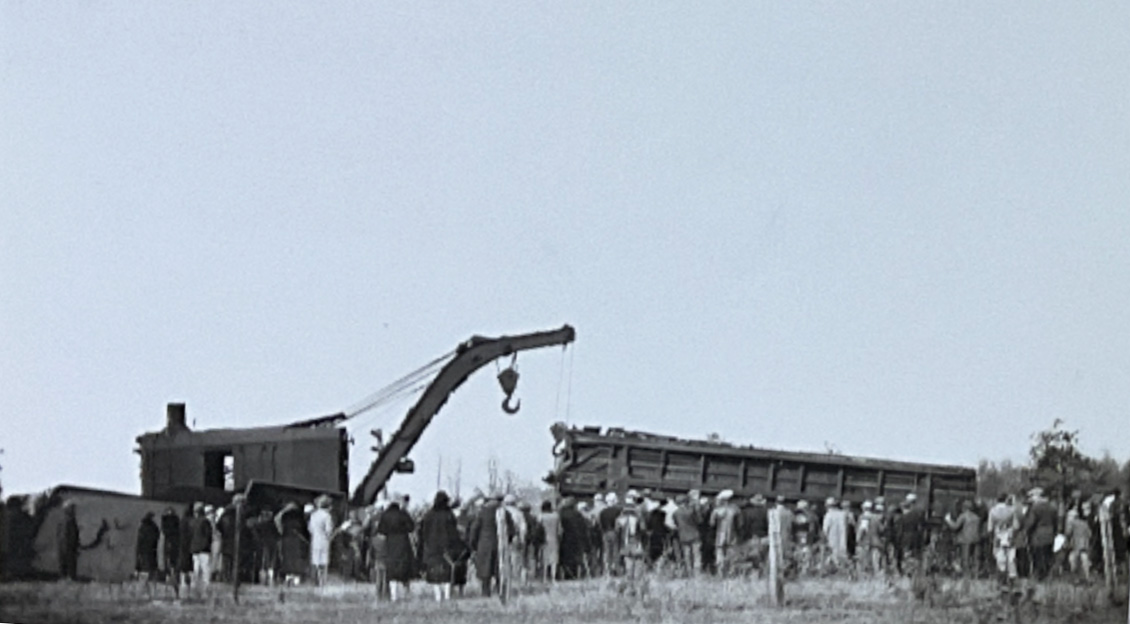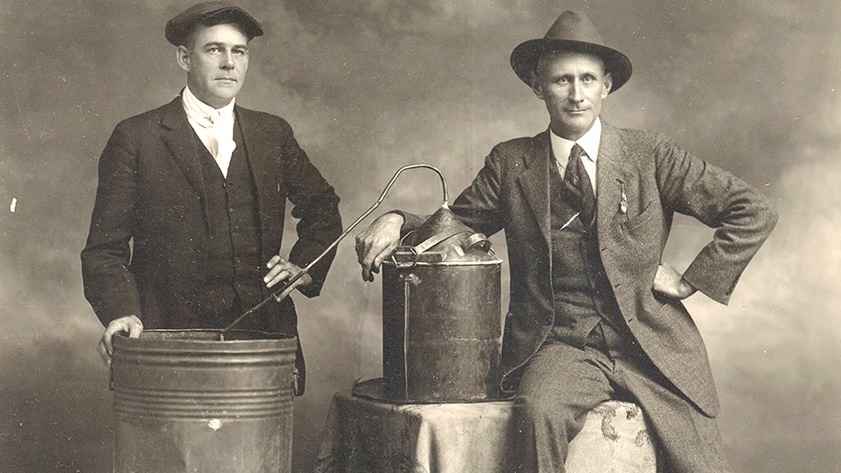By Alvin Brandt
There are many, many caves located throughout the county, ranging from small over-hangs to cavities and rock formations.
Most of the so-called caves are just over-hangs of all sizes. Pioneers took advantage of these shelters. Where they were easily accessible, farmers used them for animal shelters. A great number of the sandstone over-hangs in Southern Warren County are located near the same level at an elevation of about 660 feet.
Where a cave was located near a school, the teacher would take students on nature field trips. The Smith Creek School was near the Rekate Cave, and the Bethlehem School was near the Brandt Sinkhole/Cave. Both were used for nature studies.
There is a huge exposed sandstone in Southwestern Warren County known as the Elephant Rock. Other notable caves in the areas include: Gold Cave at Lost Creek, so-called for the yellow color of the sand in the area; Goat Cave, where some domestic goats lived and returned to the wild; Cave Creek, which flows into the Charrette Creek, was so named for the many caves in the area; Buzzards Cave is near Spoon Hollow; Grand Canyon is a rock formation on Charrette Creek near the American Legion Hall; and Devil’s Boot Cave near Marthasville is a cavity in the shape of a boot. It has the depth and width of about 25 feet with an extension on one side simulating the toe of a shoe.

The area of Camp Creek in Elkhorn Township has several caves and overhangs. Hollmann’s Cave is located in Camp Branch Township.
“Picture Cave.” As I said, there are many caves in our area, but the grand finale of caves in Warren County has to be the one known as Liermann Cave on a hill north of Holstein on land once owned by Ernest Liermann as per records at the County Recorder’s Office. It is now known as, “The Picture Cave.” Early history reveals that while John Wyatt was tracking a bear he discovered the cave in 1817. The Wyatt families came to this area in 1817 following in the footsteps of Daniel Boone. (More information on John Wyatt and family is highlighted on Page 3.)
The cave has been listed on the National Trust for Historic Preservation’s “11 most endangered historic places for 2022.”
A very small entrance leads to a large room with a passage to another cavity. Total floor space was estimated to be about 600 square feet. At some point a second entrance was found. Many folks visited this area circa 1900. Persons I spoke with who had been in the cave never made mention of finding artifacts or the artwork or even the “bottomless pit,” as folklore had it. Clumps of bear hair were reported to be found.
The reason the artwork was not noticed or seen earlier may have been because of insufficient lighting. Kerosene lanterns were the only safe lighting in the 19th century for the early adventurous folks as they would fasten a rope to a tree upon entering to be able to safely find their way back out. The light output of a kerosene lantern is equivalent to that of a 10 watt light bulb.
The question today is: how were the Native Americans able to see to do the paintings? One observation is that fire pits and cypress torches were used. That only leads to another question as cypress only grows in the bootheel of Missouri.

What about smoke inhalation? Could it be that the cavern was more open 1,200 years ago than it is today?
Is it possible that over time earthquakes caused the earth to shift, enclosing a more open overhang?
Earthquakes have occurred periodically. The most severe ones known happened Dec. 25, 1699, December 1811 and January and February 1812 along the New Madrid Fault, which shook Warren County.
Cave specialists became aware of the paintings by 1964. Since then, various archeologists have studied the cavern and its painting. They discovered nearly 300 images on the walls. In October 2020, more extensive research was done for clues as to the age of the pictures and the composition of the paints, along with other significant information about the Osage Nation.
It is amazing that the pictures are still bright and clear after all this time, especially since it is thought to be so heavily populated by bats stirring the air, along with the heavily ammoniated dust.
The previous owners bought 40 acres, plus a strip of land for an access from Howard Branch Road from Tom and Eunice Goodfellow for hunting purposes. The family, no longer having interest in hunting, sold the 40 acres along with the cave at auction Sept. 2021. The high bid was $2 million, with an additional auctioneer fee of $200,000. At a total of $2.2 million, records at the Warren County Mo. Recorders Office list the purchaser as Morning Star and His Friends, LLC, Nashville, Tn. The registered agent of the LLC is National Registered Agents, Montvue Rd. Knoxville Tn. as per information obtained at the Office of Secretary of State of Tennessee. There is no clue what the new owners plan to do with their purchase, which the National Trust for Historic Preservation cites as cause for concern.





